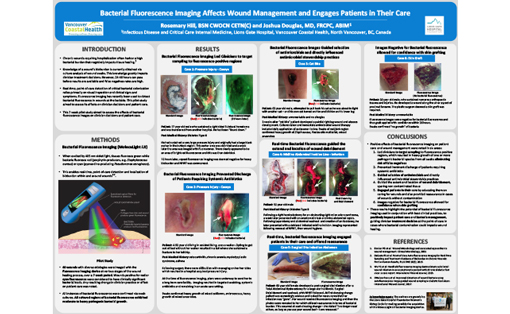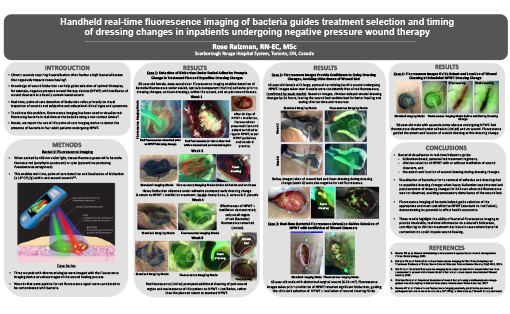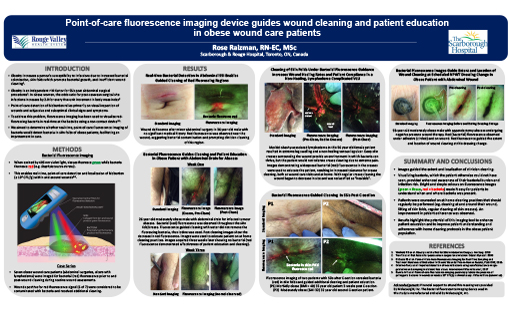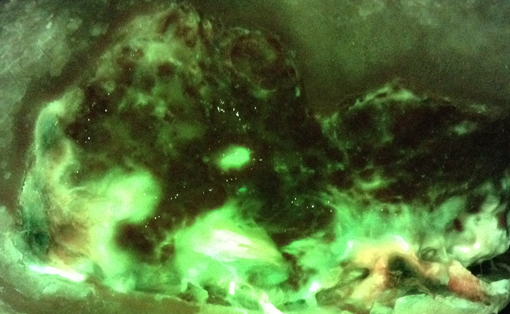ABSTRACT
Aim:
Real-time, point-of-care detection of critical bacterial colonization relies primarily on visual inspection and clinical signs and symptoms. Fluorescence imaging has recently been used to detect bacterial fluorescence in wounds at the bedside. This pilot study aimed to assess its effects on clinician decisions and patient care.
Method:
Over a 7-week period, diverse acute and chronic wounds (n=40) were imaged as part of routine wound assessments. Wounds positive for red or cyan fluorescence were considered to have clinically significant bacterial loads. Any resulting change in clinician practice or effect on patient care was noted.
Results / Discussion:
Positive effects of bacterial fluorescence imaging on patient care and wound management were noted in 6 areas: (1) Led clinicians to target sampling to fluorescence-positive regions, which resulted in heavy growth of one or more pathogenic bacterial species from all swabs, eliminating risk of false negatives; (2) Prevented imminent discharge of three patients requiring systemic antibiotics; (3) Guided selection of antimicrobials and directly influenced antimicrobial stewardship practices; (4) Guided the extent and location of wound debridement, sparing non-contaminated tissue; (5) Engaged patients in their care by educating them on caring for wounds with bacterial presence or providing reassurance in cases of wounds without contamination; (6) Images negative for bacterial fluorescence allowed for confidence when skin grafting.
Conclusion:
These results highlight the potential of bacterial fluorescence imaging, used in conjunction with best clinical practices, to positively impact patient care and bacterial management, guiding clinician treatment decisions at the point-of-care in cases where bacterial contamination could impede wound healing.














